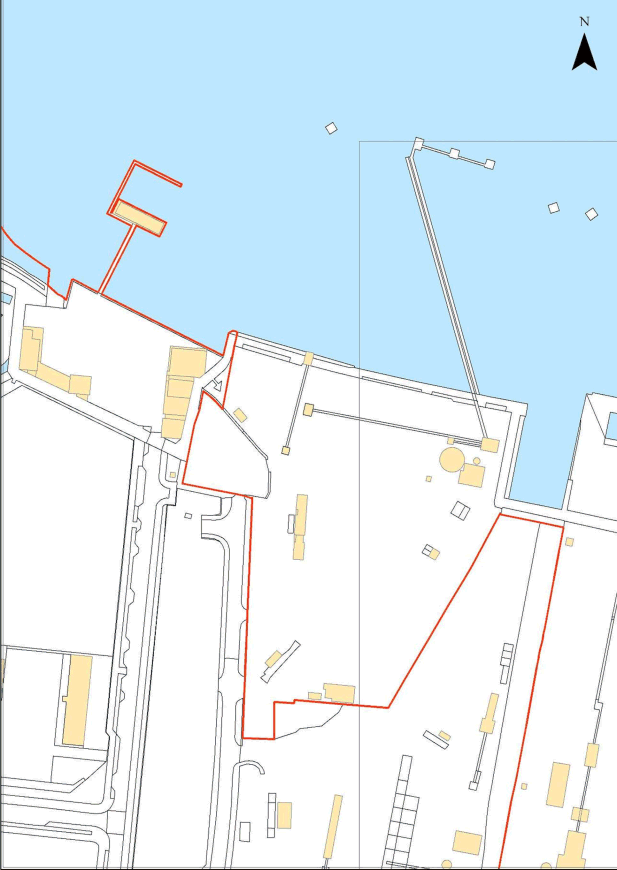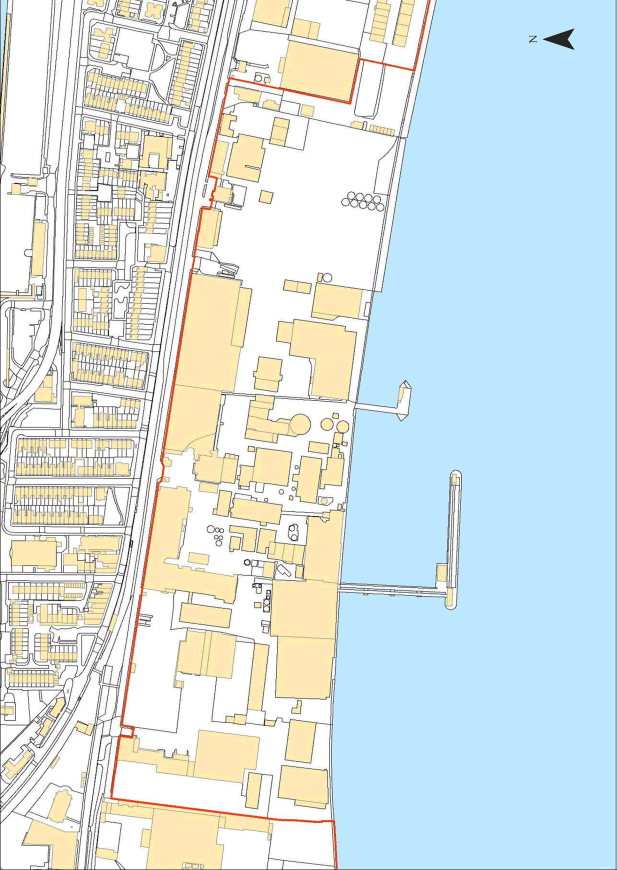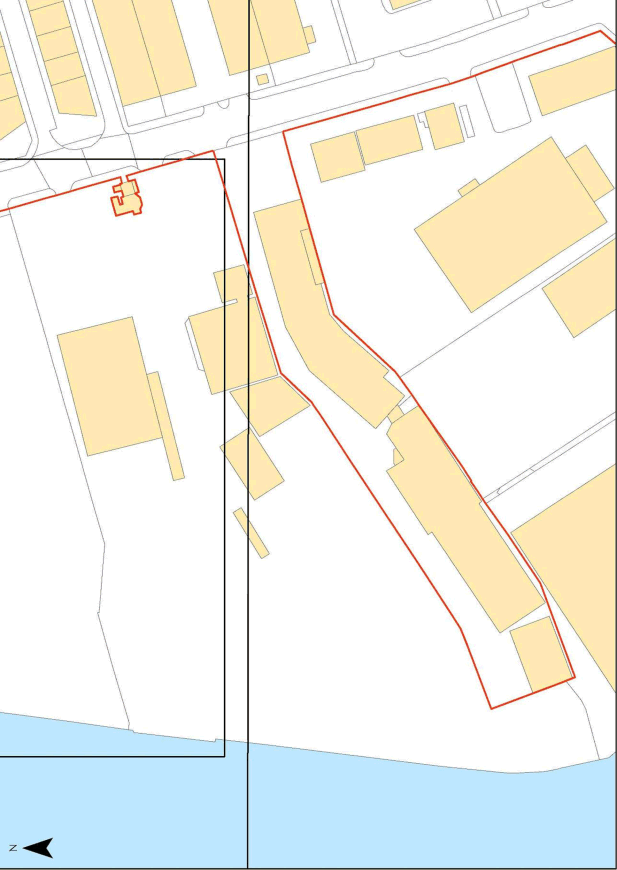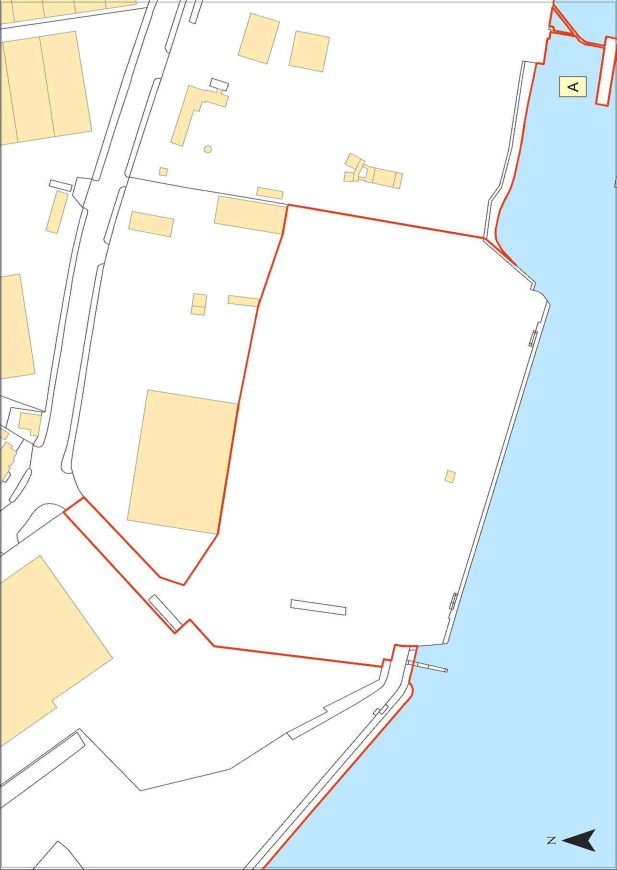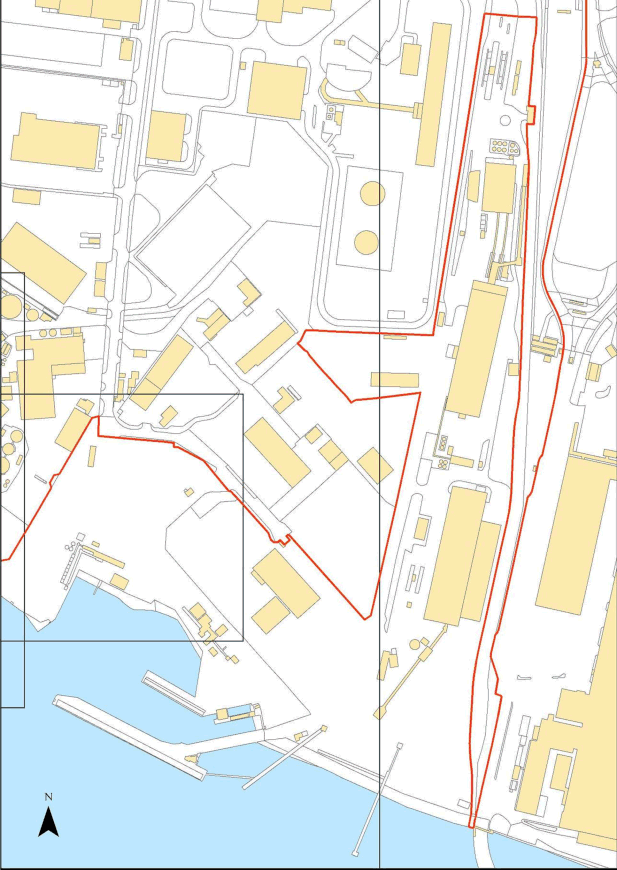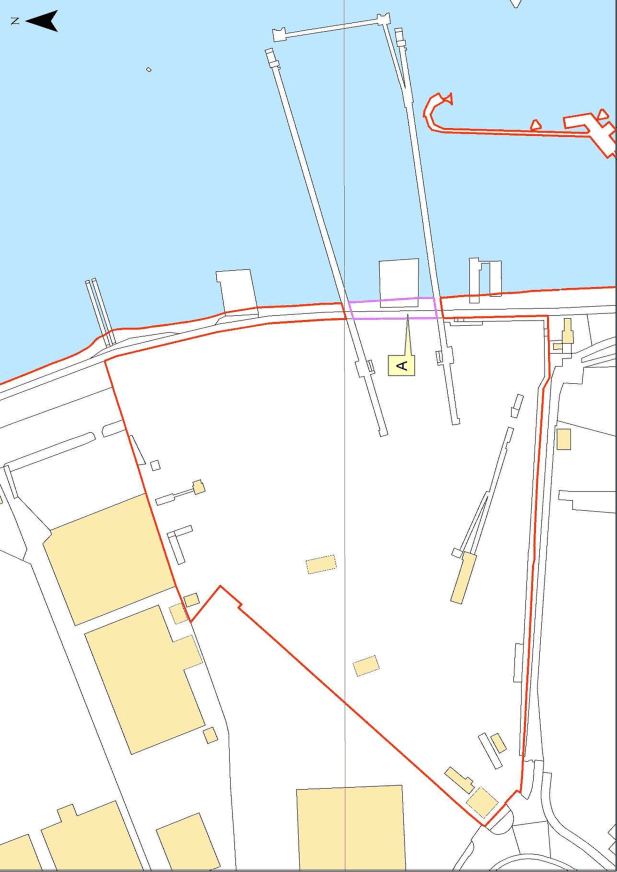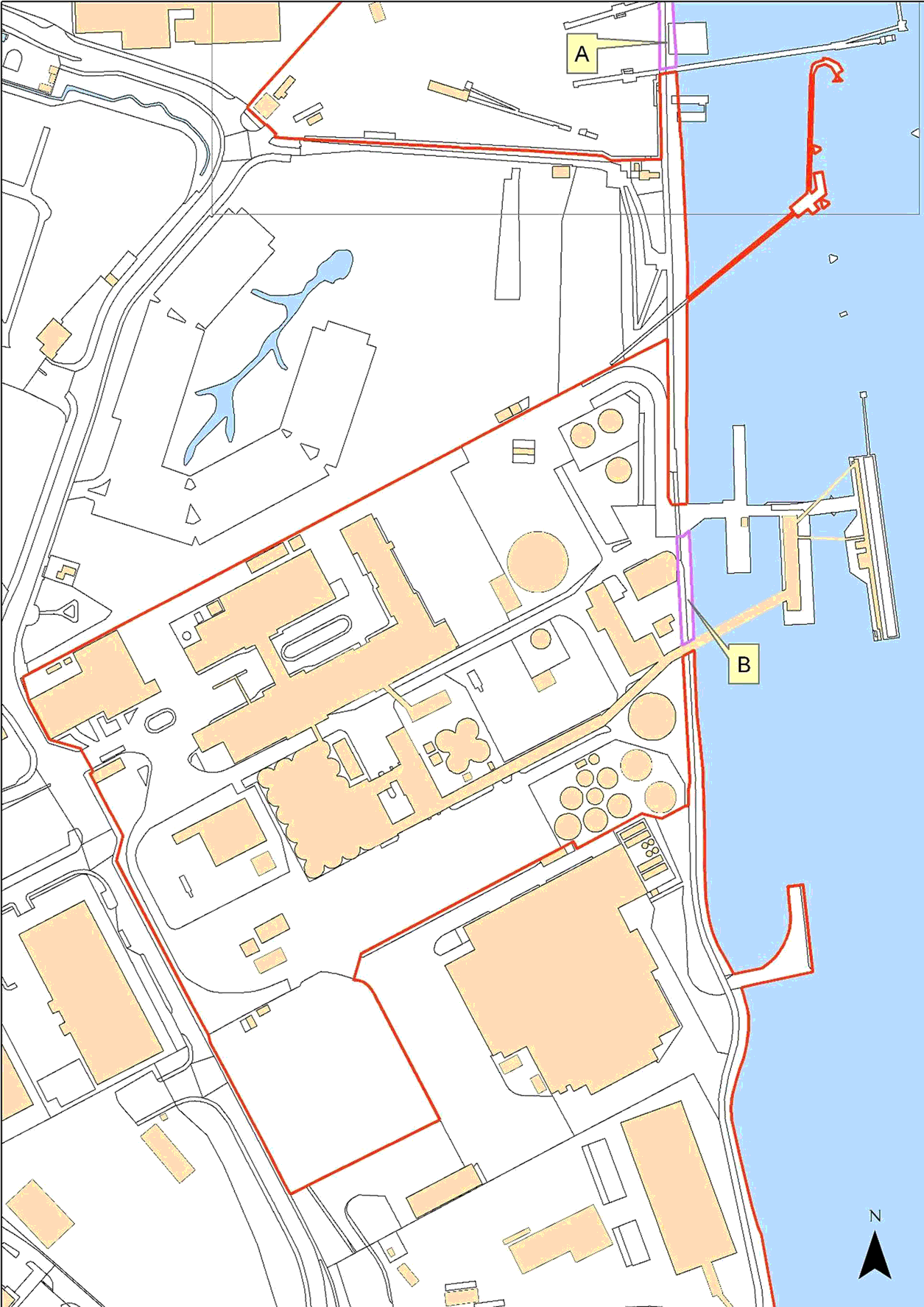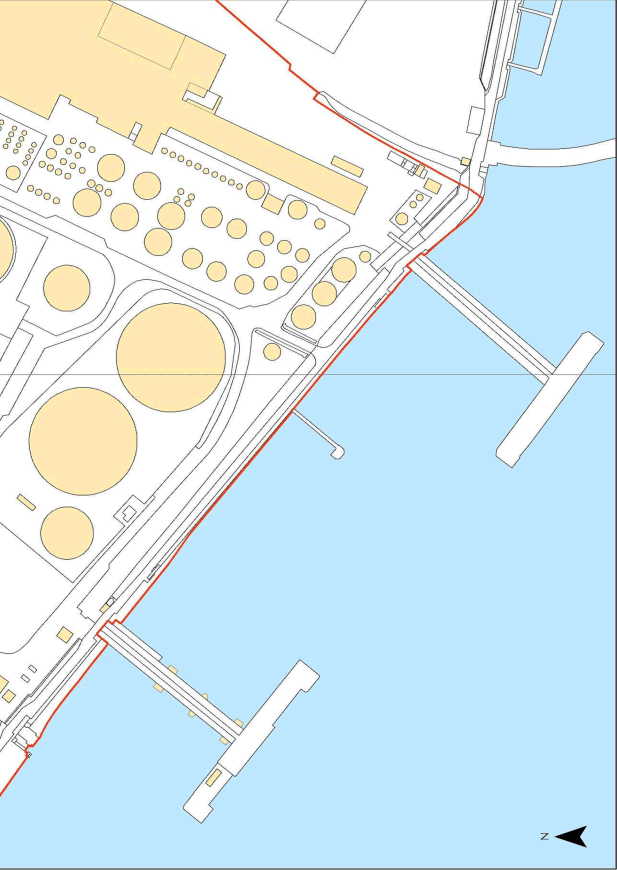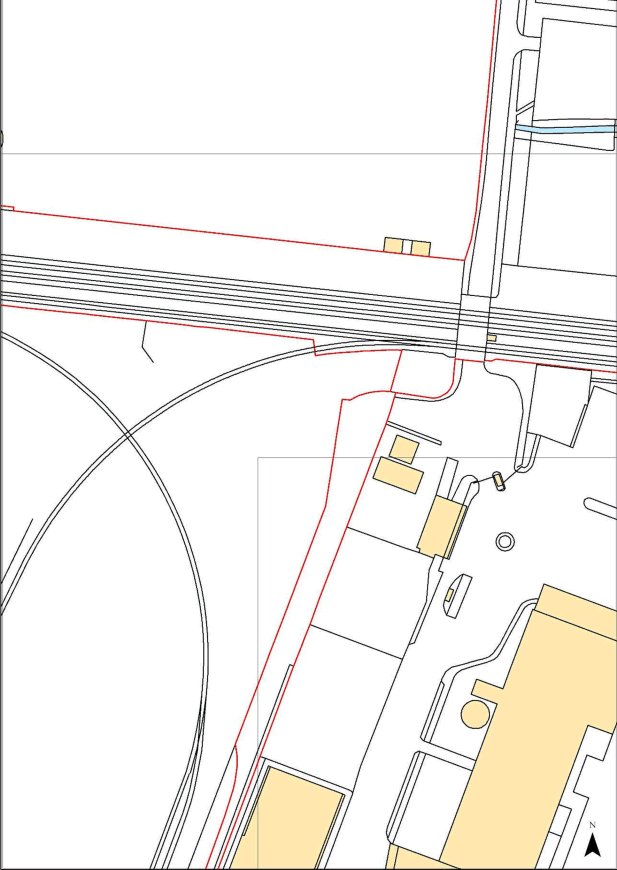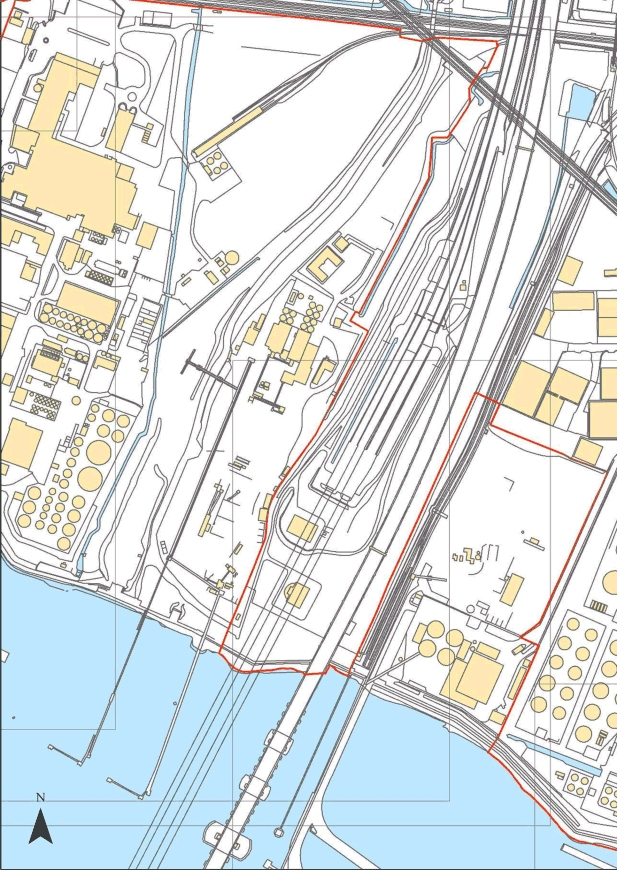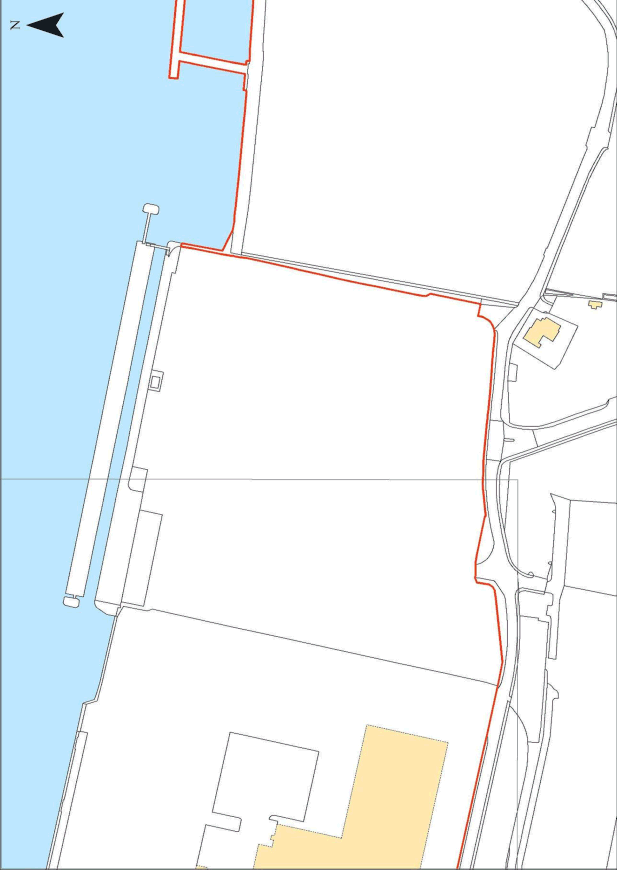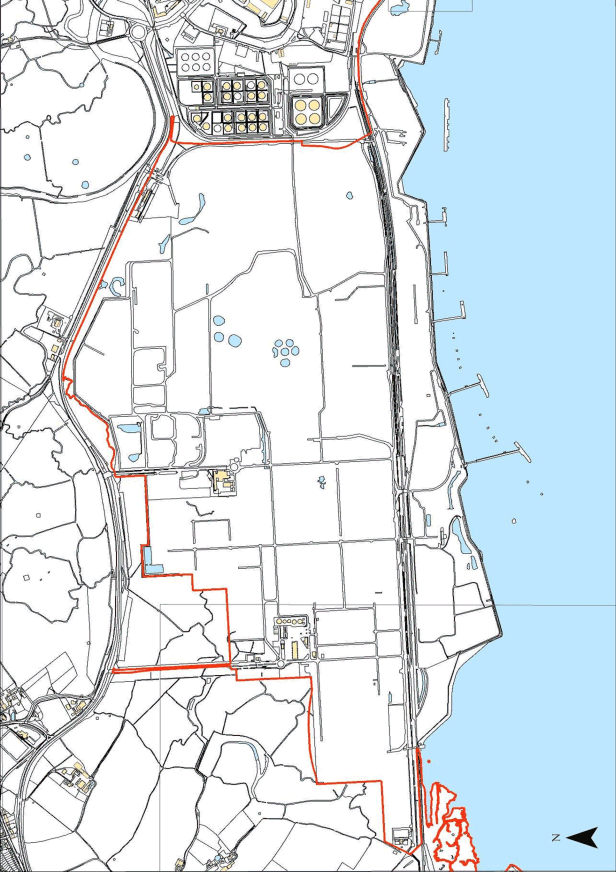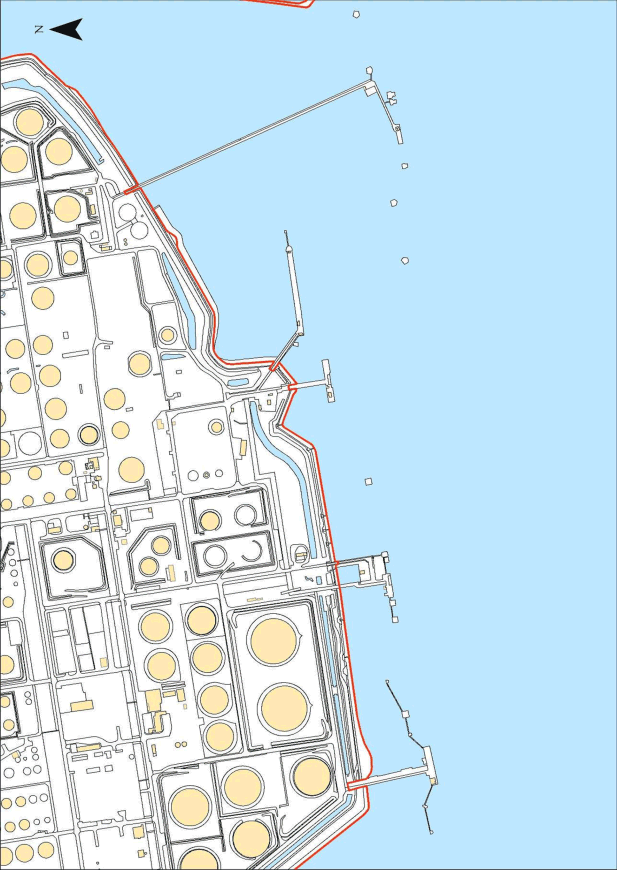This Statutory Instrument has been printed in substitution of the SI of the same number and is being issued free of charge to all known recipients of that Statutory Instrument.
Statutory Instruments
2014 No. 577
Merchant Shipping
Maritime Security
The Port Security (Port of London) Designation Order 2014
Laid before Parliament
17th March 2014
Coming into force
10th April 2014
The Secretary of State for Transport makes this Order in exercise of the powers conferred by section 2(2) of the European Communities Act 1972().
The Secretary of State is a Minister designated for the purposes of section 2(2) of the European Communities Act 1972 in relation to port security, measures relating to the safety of ships and the health and safety of persons on them, and maritime transport().
Citation and commencement
1. This Order may be cited as the Port Security (Port of London) Designation Order 2014 and comes into force on 10th April 2014.
Port boundary
2.—(1) For the purposes of the definition of “port” in regulation 2 of the Port Security Regulations 2009(), the boundary of the Port of London is defined as follows.
(2) Subject to paragraphs (5), (7), (12), (13), (22) and (23), the boundary is generally shown by the inner edge of—
(a)the red line on the overview key plan in Part 1 of Schedule 1; and
(b)the red lines on the plans, in Part 2 of Schedule 1, headed “Key Plan Inset A”, “Key Plan Inset A (continued)”, “Key Plan Inset B”, “Key Plan Inset B (continued)”, “Key Plan Inset C” and “Key Plan Inset C (continued)”.
(3) As to the inland limits of the boundary, so far as not included in the rectangles referred to in paragraph (4), the red line runs—
(a)along the beaches and foreshores; and
(b)along the outer perimeters of jetties, piers and other structures which are not beaches and foreshores.
(4) As to the parts of the boundary included in the rectangles marked “Inset 1” to “Inset 51” on the plans in Part 2 of Schedule 1, the boundary is more particularly shown by the red lines on each of the corresponding inset plans, in Part 3 of Schedule 1, headed respectively “Inset Plan 1” to “Inset Plan 28”, “Inset Plan 29” to “Inset Plan 34”, “Inset Plan 35” to “Inset Plan 43” and “Inset Plan 44” to “Inset Plan 51”.
(5) On Inset Plan 1—
(a)the items marked “A” enclosed in lilac are outside the boundary; and
(b)the part of the item marked “B” (HMS Belfast) enclosed in lilac is outside the boundary.
(6) On Inset Plan 2, the jetty marked “A” is outside the boundary.
(7) On Inset Plan 4, the area marked “A” enclosed in lilac is outside the boundary.
(8) On Inset Plan 8, the areas marked “A” enclosed in red are inside the boundary.
(9) On Inset Plan 15, the jetty at the area marked “A” is outside the boundary.
(10) On Inset Plan 17, the jetty marked “A” is outside the boundary.
(11) On Inset Plan 21, the jetty at the area marked “A” is outside the boundary.
(12) On Inset Plan 22, the area marked “A” enclosed in lilac is outside the boundary.
(13) On Inset Plan 23, the area marked “A” edged on three sides in lilac, and the area marked “B” enclosed in lilac, are outside the boundary.
(14) On Inset Plan 26, the areas marked “A” enclosed in red are inside the boundary.
(15) On Inset Plan 28, the part of the boundary included in the rectangle marked “Inset A” is more particularly shown by the red lines on the corresponding inset plan, in Part 3 of Schedule 1, headed “Inset Plan 28A”.
(16) On Inset Plan 34, the part of the boundary included in the rectangle marked “Inset A” is more particularly shown by the red lines on the corresponding inset plan, in Part 3 of Schedule 1, headed “Inset Plan 34A”.
(17) On Inset Plan 35, the jetty marked “A” is outside the boundary.
(18) On Inset Plan 43, the part of the boundary included in the rectangle marked “Inset 43A” is more particularly shown by the red line on the corresponding inset plan, in Part 3 of Schedule 1, headed “Inset Plan 43A”.
(19) On Inset Plan 44, the area marked “A” enclosed in red is inside the boundary.
(20) Where the red line runs along a beach or foreshore, or along the outer perimeter of a jetty, pier or other structure which is not a beach or foreshore, the boundary runs along the edge of the land on that beach or foreshore, or along the edge of that jetty, pier or other structure, which is below the level of mean high water springs.
(21) The limit of the boundary—
(a)on the River Darent, is the Dartford Creek Flood Barrier at Dartford Creek;
(b)at Barking Creek, is the downstream face of the Alfred’s Way (A13) road bridge;
(c)at the mouth of the River Lea, is the downstream face of the Barking Road (A13) Bridge; and
(d)at the mouth of the Ravensbourne at Deptford Creek, is the normal tidal limit.
(22) The anchorages specified in the table headed “Designated Anchorages” in Part 4 of Schedule 1 are inside the boundary.
(23) The navigational channels specified in the table headed “Designated Navigational Channels” in Part 5 of Schedule 1 are inside the boundary.
The Thames Port Security Authority
3.—(1) For the purposes of the Port Security Regulations 2009(), the Thames Port Security Authority is designated as the port security authority for the Port of London.
(2) Schedule 2 has effect with respect to the Thames Port Security Authority.
Review
4.—(1) The Secretary of State must from time to time—
(a)carry out a review of this Order,
(b)set out the conclusions of the review in a report, and
(c)publish the report.
(2) In carrying out the review the Secretary of State must, so far as is reasonable, have regard to how Directive 2005/65/EC of the European Parliament and of the Council of 26th October 2005 (which is implemented by means of the Port Security Regulations 2009) is implemented in other member States.
(3) The report must in particular—
(a)set out the objectives intended to be achieved by the regulatory system established by those Regulations and this Order,
(b)assess the extent to which those objectives are achieved, and
(c)assess whether those objectives remain appropriate and, if so, the extent to which they could be achieved with a system that imposes less regulation.
(4) The first report under this article must be published before 10th April 2019.
(5) Reports under this article are afterwards to be published at intervals not exceeding five years.
Signed by authority of the Secretary of State for Transport
Stephen Hammond
Parliamentary Under Secretary of State
Department for Transport
5th March 2014
Article 2
SCHEDULE 1
Article 2(2)(a)
PART 1Boundary of the Port of London–Overview Key Plan
Article 2(2)(b)
PART 2Key Plan Inset A
Key Plan Inset A (continued)
Key Plan Inset B
Key Plan Inset B (continued)
Key Plan Inset C
Key Plan Inset C (continued)
Article 2(4)
PART 3Inset Plan 1
Inset Plan 2
Inset Plan 3
Inset Plan 4
Inset Plan 5
Inset Plan 6
Inset Plan 7
Inset Plan 8
Inset Plan 9
Inset Plan 10
Inset Plan 11
Inset Plan 12
Inset Plan 13
Inset Plan 14
Inset Plan 15
Inset Plan 16
Inset Plan 17
Inset Plan 18
Inset Plan 19
Inset Plan 20
Inset Plan 21
Inset Plan 22
Inset Plan 23
Inset Plan 24
Inset Plan 25
Inset Plan 26
Inset Plan 27
Inset Plan 28
Inset Plan 28A
Inset Plan 29
Inset Plan 30
Inset Plan 31
Inset Plan 32
Inset Plan 33
Inset Plan 34
Inset Plan 34A
Inset Plan 35
Inset Plan 36
Inset Plan 37
Inset Plan 38
Inset Plan 39
Inset Plan 40
Inset Plan 41
Inset Plan 42
Inset Plan 43
Inset Plan 43A
Inset Plan 44
Inset Plan 45
Inset Plan 46
Inset Plan 47
Inset Plan 48
Inset Plan 49
Inset Plan 50
Inset Plan 51
Article 2(22)
PART 4Designated Anchorages
In this part, the miles referred to are nautical miles() and the bearing referred to is true.
Part 4–Designated Anchorages (continued)
Part 4–Designated Anchorages (continued)
Article 2(23)
PART 5Designated Navigational Channels
Article 3(2)
SCHEDULE 2The Thames Port Security Authority
Members
1.—(1) The Thames Port Security Authority (in this Schedule called “the Authority”) is to consist of three or more members, each of them appointed by the Secretary of State.
(2) Subject to the following provisions of this paragraph, each member of the Authority—
(a)holds and vacates office in accordance with the terms of the member’s appointment; and
(b)on ceasing to be a member is eligible for re-appointment.
(3) A member of the Authority may resign the office of member by giving notice to that effect to the Secretary of State and will cease to hold office—
(a)on the date specified for the purpose in the notice; or
(b)if that date falls before the expiration of the period of 21 days beginning with the date on which the notice is served, on the date immediately following the expiration of that period.
(4) The Secretary of State may give notice to a member to the effect that the member will cease to hold office on a date specified for the purpose in the notice.
(5) A notice under sub-paragraph (4) may be given only in one or more of the following circumstances—
(a)the member has failed to attend four or more consecutive meetings of the Authority without the permission of the Secretary of State;
(b)the member has a financial interest and it appears to the Secretary of State that the interest is likely to influence or to be capable of being seen as influencing the performance of the member’s functions;
(c)the member has been adjudged bankrupt, the member’s estate has been sequestrated or the member has made a composition with creditors or granted a trust deed for creditors;
(d)there has been misconduct on the part of the member relevant to his or her position as a member of the Authority; or
(e)the member is unable or unfit to perform the functions of the office.
(6) It is the duty of every member of the Authority, so far as is reasonably practicable, to attend all meetings of the Authority.
(7) If it be impracticable for a member to attend a meeting, the member must appoint another member to act as a proxy.
(8) A proxy must speak and vote at the meeting on behalf of the absent member as that member may direct.
Proceedings of the Authority
2.—(1) The Authority must hold at least two meetings in any 12-month period.
(2) Subject to the provisions of this Order, it is for the Authority to regulate its own procedure (including quorum).
(3) The Authority must appoint one of its members as chair of the Authority.
(4) The person appointed remains the chair of the Authority until that person—
(a)is replaced as chair by another member; or
(b)ceases to be a member of the Authority, in which case it becomes the duty of the Authority to appoint a new chair as soon as reasonably practicable.
(5) The validity of any proceedings of the Authority is not affected by a vacancy amongst the members or by a defect in the appointment of a member.
(6) Other than in exceptional circumstances which require a meeting of the Authority to be held at short notice, the Authority must give the Secretary of State at least three days clear notice of a meeting of the Authority together with a copy of the agenda for the meeting.
(7) A representative of the Secretary of State may attend any meeting as an observer.
(8) Minutes must be kept of the proceedings of the Authority.
(9) The Authority must provide the Secretary of State with a copy of the minutes of a meeting before the end of the period of thirty days beginning with the day of the meeting.
Members’ interests
3.—(1) A member who has any pecuniary interest, direct or indirect, in any matter that is brought up for consideration at a meeting of the Authority (which expression in this paragraph includes any committee or subcommittee of the Authority) must disclose the nature of the interest to the meeting.
(2) Where such a disclosure is made—
(a)the disclosure must be recorded in the minutes of the meeting;
(b)the member must not take any part in any deliberation or decision of the Authority with respect to that matter; and
(c)the member may be excluded from the meeting whilst the matter is under consideration.
(3) For the purposes of this paragraph, a general notification given at a meeting of the Authority by a member to the effect that the member—
(a)is a member, director or employee of, or partner in, a specified company or firm, and
(b)is to be regarded as interested in any matter involving that company or firm,
is a sufficient disclosure of the member’s interest in any such matter for the purposes of any meeting where the matter comes up for discussion.
(4) A member need not attend in person at a meeting of the Authority in order to make a disclosure required to be made under this paragraph, provided that the member takes reasonable steps to secure that the disclosure is made by a notice which is read and considered at the meeting.
(5) Subject to sub-paragraph (6), a member of the Authority is to be treated for the purposes of this paragraph as having an indirect pecuniary interest in a contract, proposed contract or other matter if—
(a)the member, or a proxy of the member, is a director of a company or other body (not being a public body) with which the contract was made or is proposed to be made or which has a direct pecuniary interest in the other matter under consideration, or
(b)the member is in partnership with, or is in the employment of, a person with whom the contract was made or is proposed to be made or who has a direct pecuniary interest in the other matter under consideration,
and in the case of two persons living together as a couple (whether married or not) an interest of one, if known to the other, is deemed for the purposes of this paragraph also to be an interest of the other.
(6) A member is not to be treated as having a pecuniary interest in any contract, proposed contract or other matter by reason only—
(a)of membership of a company or other body if the member has no beneficial interest in the securities of that company or other body; or
(b)of an interest which is so remote or insignificant that it cannot reasonably be regarded as likely to influence the member in the consideration or discussion of, or voting on, any question with respect to that matter.
(7) The Secretary of State may, subject to such conditions as appear to the Secretary of State to be appropriate, remove any prohibition imposed by virtue of this paragraph in any case where the prohibition is impeding or likely to impede the ability of the Authority to perform its functions under this Order or under the Port Security Regulations 2009.
(8) The power of the Secretary of State under sub-paragraph (7) includes power to remove, either indefinitely or for any period, a prohibition which would otherwise attach to any member, or members of any description, by reason of such interests and in respect of such matters, as may be specified or described by the Secretary of State.
(9) Nothing in this paragraph precludes any member from taking part in the consideration or discussion of, or voting on, any question whether an application should be made to the Secretary of State for the exercise of the power conferred by sub-paragraph (7).
(10) Any person who fails to comply with the provisions of sub-paragraph (1) is guilty of an offence and liable on summary conviction to a fine not exceeding level 4 on the standard scale.
(11) A person shall not be convicted of an offence under sub-paragraph (10) if it is proved that that person did not know that the contract, proposed contract or other matter in which that person had a pecuniary interest was the subject of consideration at the meeting concerned.
The Crown
4. The Authority is not to be regarded as the servant or agent of the Crown or as enjoying any status, immunity or privilege of the Crown and its property is not to be regarded as property of, or held on behalf of, the Crown.
EXPLANATORY NOTE
This Order is one of a series of Orders implementing Directive 2005/65/EC of the European Parliament and of the Council of 26th October 2005 (OJ L 310, 25.11.2005, p28-39) on enhancing port security at individual ports in the United Kingdom. The Directive was transposed in relation to the United Kingdom as a whole by the Port Security Regulations 2009 (S.I. 2009/2048, amended by S.I. 2013/2815).
Article 2 and Schedule 1 define the boundary of the Port of London for the purposes of the definition of “port” in regulation 2 of the Port Security Regulations 2009 (as amended by S.I. 2013/2815). Certain anchorages and certain navigational channels lying outside the area bounded by the red line on the plans in Schedule 1 are nevertheless included inside the defined boundary by article 2(22) and (23) and Parts 4 and 5 of Schedule 1. Article 3(1) designates the Thames Port Security Authority, for the purposes of regulation 5 of those Regulations, as the port security authority for the Port of London. Article 3(2) and Schedule 2 make provision with respect to the Authority’s membership and proceedings, to members’ interests and to the Authority’s status as a non-Crown body. Article 4 requires the Secretary of State to review the operation and effect of this Order and publish a report before 10th April 2019 and within every five years after that. Following a review it will fall to the Secretary of State to consider whether the Order should remain as it is, or be revoked or be amended. A further instrument would be needed to revoke the Order or to amend it.
A full impact assessment of the effect that this instrument will have on the costs of business and the voluntary sector is available from Tony Smith at Zone 2/32, 33 Horseferry Road, London SW1P 4DR (Tel: 020 7944 5875; email: Tonyl.Smith@dft.gsi.gov.uk) and is published with the Explanatory Memorandum alongside the instrument on www.legislation.gov.uk.












